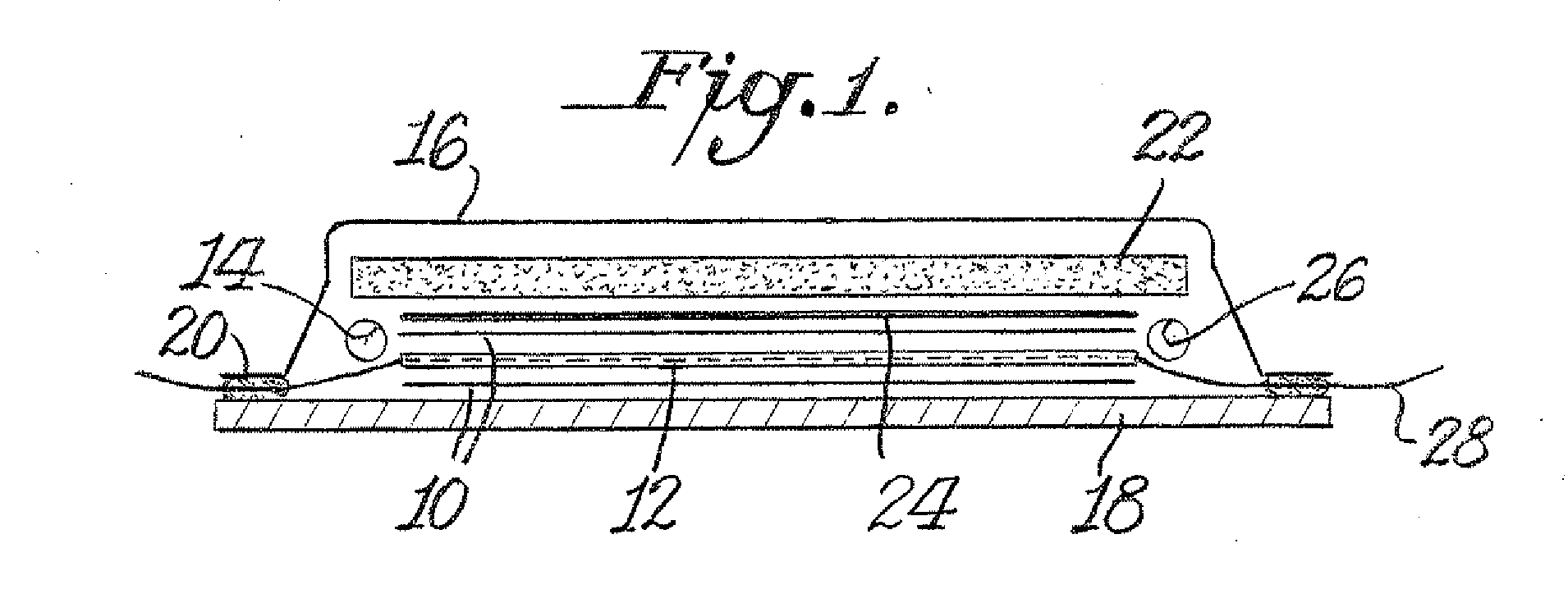Automated process for embedding optical fibers in woven composites
a technology of optical fibers and composites, applied in protective fabrics, instruments, lighting and heating apparatuses, etc., can solve the problems of increasing the labor, cost and complexity of integrating waveguides into composite structures, and achieves no polishing, short time, and increased labor and cost. , the effect of increasing the complexity
- Summary
- Abstract
- Description
- Claims
- Application Information
AI Technical Summary
Benefits of technology
Problems solved by technology
Method used
Image
Examples
Embodiment Construction
1. Introduction
[0013] Two application areas necessitate embedding optical fibers into structural fiber-reinforced polymer composites: sensing and communication. For sensing applications, optical sensors provide a compact, low-power means for transducing properties such as temperature, strain, and degree of cure. This information, in turn, can then be used to judge the health of a structure, interrogate the conditions of the surrounding environment, or monitor and adjust the process conditions during fabrication of the composite [1-9]. By coupling many optical fiber sensors into a distributed sensor network, a rich data set is generated which can be used to assess the global conditions of a composite structure.
[0014] For communication applications, the optical fiber acts as a conduit which transmits data between points on the structure. By necessity, optical sensors include fiber optic leads which allow communication between the sensor and the optical conditioning source. In simpl...
PUM
| Property | Measurement | Unit |
|---|---|---|
| thickness | aaaaa | aaaaa |
| length | aaaaa | aaaaa |
| size | aaaaa | aaaaa |
Abstract
Description
Claims
Application Information
 Login to View More
Login to View More - R&D
- Intellectual Property
- Life Sciences
- Materials
- Tech Scout
- Unparalleled Data Quality
- Higher Quality Content
- 60% Fewer Hallucinations
Browse by: Latest US Patents, China's latest patents, Technical Efficacy Thesaurus, Application Domain, Technology Topic, Popular Technical Reports.
© 2025 PatSnap. All rights reserved.Legal|Privacy policy|Modern Slavery Act Transparency Statement|Sitemap|About US| Contact US: help@patsnap.com



